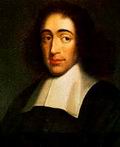offline
- tuzor

- Legendarni građanin

- Pridružio: 03 Sep 2007
- Poruke: 4115
- Gde živiš: U Kraljevstvu duha
|
Ne da liči, nego - pljunuti!  Jeste Danila (Danijel). Jeste Danila (Danijel).
A pošto je sliku zaista teško naći (sasvim drugim povodom sam je "iščeprkao"), uzimajući u obzir i grešku koja se pojavljuje kod slova u umetnikovom prezimenu, priznajem odgovor. Delo se zove Woman driving posh car, s tim što je navedeno "Vassilief" umesto "Vassilieff" (sa dva "f"). A možda je tako i ispravno, ko će ga znati?
Na ovom linku se mogu naći zanimljive slike, i priče o umetnicima, iz ugla pripadnika jedne umetničke porodice:
http://familyartstoriesrubbo.wordpress.com/
http://familyartstoriesrubbo.files.wordpress.com/2008/03/dan-paint-wonan.jpg
Citat:Vassilieff returned to Australia in October 1935 and settled in Sydney. Combining an iconic style with immediate experience, he painted turbulent street scenes of inner-city areas. He also produced still lifes, such as 'Red Roses', unflattering portraits, and lively landscapes of the windswept Woronora area. His expressionist paintings impressed Basil Burdett, Sydney Ure Smith, Gavin Long and John Young, and he exhibited twice at the Macquarie Galleries. In 1937 he eloped with Helen Macdonald. They lived at Biloela, Queensland, and then in Melbourne. Enthusiastic reviews of his paintings—often of children playing in the streets of Collingwood, Fitzroy and East Melbourne—established his reputation.
. . .
For Connie Smith, Vassilieff painted a four-part screen, 'Expulsion from Paradise'. Its theme of the fall of man had a lasting impact on Arthur Boyd and John Perceval, both of whom visited him to learn to paint quickly. Vassilieff, however, regarded religious subjects as suitable only for the decorative arts. His rejection of all dogma—religious, political and aesthetic—annoyed the social realists. In 1944 he helped to defeat the communist attempt to take over the Contemporary Art Society.
. . .
After a number of paintings on the theme of marriage, he transferred his energies to sculpture, using limestone from Lilydale; power tools enabled him to work faster and to respond spontaneously to the grain. Vassilieff reconciled the formal language of European iconic art with the lively shapes of folk art in his vigorous standing figures, such as 'Petit Bourgeois', 'Mechanical Man' and 'Stenka Razin'. The aesthetic elements—which he sometimes sacrificed to the more urgent need for expression in his paintings—were achieved through the brilliant finish which revealed the metamorphic pattern of the marble. In the early 1950s the titles of his paintings and sculpture assumed an aggressively anti-imperialist mood, due in part to his wife's political activity. In 1953 he became vice-president of the Contemporary Art Society.
http://adbonline.anu.edu.au/biogs/A160534b.htm
Citat:Bojićeva zaključuje da je Vasiljev bio autor snažne individualnosti na čiji su umetnički razvoj jako uticali njegovi slovenski, ruski, odnosno, preciznije, čak kozački koreni, porodična ikonopisačka tradicija, ali i širina koju je umetnik stekao putujući Evropom, Amerikom, Azijom i Australijom.
Tako se, smatra Zoja Bojić, formirao umetnički izraz Vasiljeva, nenarativni, dramatični jezik simbola i alegorija svojstven njegovom duhu, obojen specifičnim humorom, ironijom i sarkazmom, a ponikao iz slovenske tradicije i sa australijskog tla. Vasiljev je uveo u dijalog Džo Deutera (Joe Deuter) i Neda Kelija (Ned Kelly), sa australijskog podneblja, sa slovenskim tragikomičnim antiherojem iz romana Hašeka, Ćosića, Gogolja, Iljfa i Petrova, Vojnoviča, sa realnim likom Stenjke Razina i njegovim odjecima u ruskoj literaturi, sa Petruškom, Ivanuškom, ali i sa “počovečenim” životinjskim likovima iz ruskih bajki, sve do Peće i vuka Prokofjeva.
http://www.komunikacija.org.rs/komunikacija/casopi.....ad_ser_lat
Sve u svemu, Jelkice - izvoli!!! 
|





















